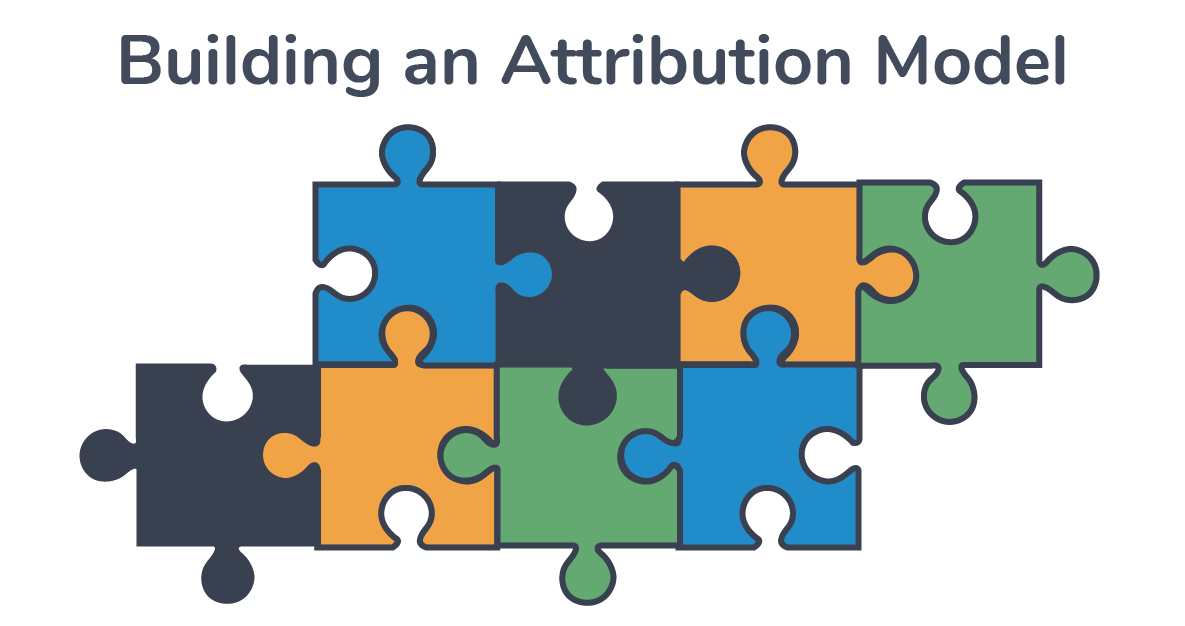How to Test, Optimize, and Refine Your Attribution Decisions
January 8, 2021 •DJ Team

Digital marketing attribution has proven to be one of the most significant challenges facing marketers today. While marketers have no shortage of data to understand the impact and relevance of their many tactics, there hasn’t historically been an absolute gold standard for deciding which tactics get credit for conversions.
Technology is making it easier to shift towards a multi touch attribution model. This gives each piece of content a customer interacts with on the way to a purchase partial credit for that sale.
Still, your unique mix of digital marketing activities can create big problems in some out-of-the-box attribution models. What is an attribution problem? Here’s one example: your chosen time decay marketing attribution model in Google Analytics doesn’t align with the different attribution windows set by Facebook and Pardot. So, you can’t be sure if an email you sent five weeks ago played any role in a sale you got today.
Getting all the pieces to fit together just the way you need requires a fair bit of testing and tweaking—but it’s well worth the effort. Here’s how to build an attribution model that truly works for your brand—and how to continue improving it so you always understand the ROI of each marketing tactic you employ.
Testing a Marketing Attribution Model
Navigating attribution models in your standard analytics software can feel like walking through an endless maze of dropdowns and checkboxes. Taking Google Analytics as just one example, there are seven different conversion metrics you can select for:
- Conversions
- Cost per Conversion
- Conversion Rate
- Conversion Value
- Value per Conversion
- Conversion Value per Click
- Conversion Value per Cost
…plus six different attribution models available:
- First Click
- Last Click
- Linear
- Time Decay
- Position-Based
- Data-Driven
That’s a lot of combinations to test if you want to see what different attribution models would look like. Fortunately, it’s easier than you might think to test how different attribution models would look using your real analytics data. Here’s how to change the attribution model in Google Analytics:
First, enter the Tools section of your account and click on Conversions to see a list of conversion actions you’re tracking. Select one to test with a new attribution model to see which model it’s currently using, along with options for toggling different conversion windows and counts. Click on the button to edit settings.
Second, choose a new attribution model you want to test from the attribution model dropdown list.
Third, go into your accounts Campaigns section and click the Columns button, then select “Modify columns” from the dropdown. Under both Conversions and Attribution, make sure all seven metrics are selected.
Fourth, view any campaign and compare the “Conversions” column to the “Conversions (current model)” to see how your numbers change depending on the attribution model you choose.
From here, you can update your attribution model to any of the available options. Then, return to your Campaigns screen to see how any of your conversion metrics shift from model to model.
This is what effective attribution model testing looks like; as you review the changes in numbers from model to model using your historical analytics data, you’ll be able to identify blind spots and potentially misattributed conversions you might have.

Optimizing and Refining A Chosen Attribution Model
Once you’ve chosen an attribution model that gives you the clarity you need to weigh each of your marketing tactics appropriately, it’s time to optimize. While it’s helpful to turn on every conversion metric during the testing phase, you may find that some of the metrics are cluttering up the really important information.
Do you care more about the overall conversion value of a campaign, or are you interested in understanding a campaign’s conversion value per click so you can optimize your ads?
If you aren’t sure which metrics will be most valuable, start with a smaller set and let it run for a few weeks. In that time, you’ll collect enough data to see if you’re missing out on information you could be using to improve your campaigns.
Whenever you do change any aspect of your attribution model, keep this buffer of 2-3 weeks before making changes again. That way, you can be sure you’re working with enough information to make informed decisions.
Simplify Digital Marketing Attribution with DemandJump
At the end of the day, the biggest challenge to solving the advertising attribution problem just might be the clunkiness of analytics data and dashboards. While tools like Google Analytics are powerful, they’re also designed to work in a very specific way.
At DemandJump, we understand the demands of modern content marketers and digital marketing professionals, and that’s why we’ve built our multi-touch attribution tools to be intuitive and flexible.
As you work to better understand your audiences and deliver them content that will convert, DemandJump is here to make every step easier, from topic ideation all the way through to marketing attribution and budget prioritization.
Try it for free and take action on the insights already hiding in your data.
Featured Articles
Categories
- Attribution Tracking (13)
- Channel Optimization (11)
- Consumer Insights (68)
- Content Marketing (251)
- Data Science (8)
- Digital Marketing (6)
- Digital Transformation (26)
- Enterprise (10)
- Lead Generation (14)
- Market Intelligence (8)
- Marketing Analytics (39)
- Marketing Attribution (57)
- Marketing Management (153)
- Marketing Operations (86)
- Organic Search (222)
- Paid Search (52)
- Pillar-Based Marketing (63)
- Programmatic Advertising (9)
- SaaS Content (14)
- SaaS Marketing (29)
- Search Marketing (111)
- SEO Keyword Research (28)
- SEO Pillar (18)
- SEO Strategy (46)
- SMB (5)
- Website Content (12)


